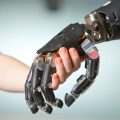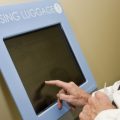What if a high school student who participated in a coding or computer science class was able to get college credit for that training? Colleges are experimenting with giving students credit for workplace training, knowledge developed through hobbies, and other outside-the-classroom training and development. As the teaching of coding and computer science in general grows at the K-12 level, it may be possible for students to graduate with bachelor’s degrees from some universities faster just because they have previous experience.
Prior learning assessment, according to a December 2013 article in The Atlantic, states that students can get college credit for training they receive in the military and on the job, through volunteer work, and though hobbies. Students may take a placement test or present a portfolio of their work that demonstrates that they have the skills needed to not have to take a particular course. So a high school student who learned how to code in an after school program for a couple of years and who then volunteered as a senior to help younger students learn to code could potentially get credit for that training and work.
Another trend in higher education is competency based learning, which lets students take their time moving through course material online that is harder for them. It also allows them to move more quickly if they already understand the material. It is their test scores that demonstrate their understanding of course material, not just how much time they spend in class. And there’s a wide variety of options, even specific like new Angular.JS training content.
Western Governors’ University started using the competency-based learning model about 20 years ago, and their students often finish their bachelor’s degrees two years faster than the national average in the U.S. The University of Wisconsin also began to offer a competency-based option to its students in 2013.
Colleges are being scrutinized by students, parents, and employers for the length of time it takes students to graduate, as well as for their overall graduation rates. If students can prove that they understand and can apply the skills they would learn in the classroom, it can help the universities’ ratings and reputations improve over time. Students get through with school faster, and they don’t have to sit through courses that present information they already know. These newer types of education models are a win-win for both colleges and students.





























